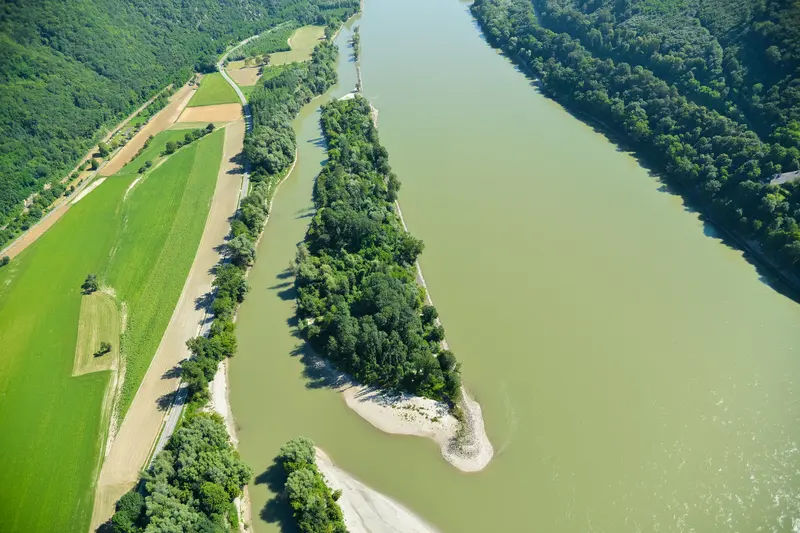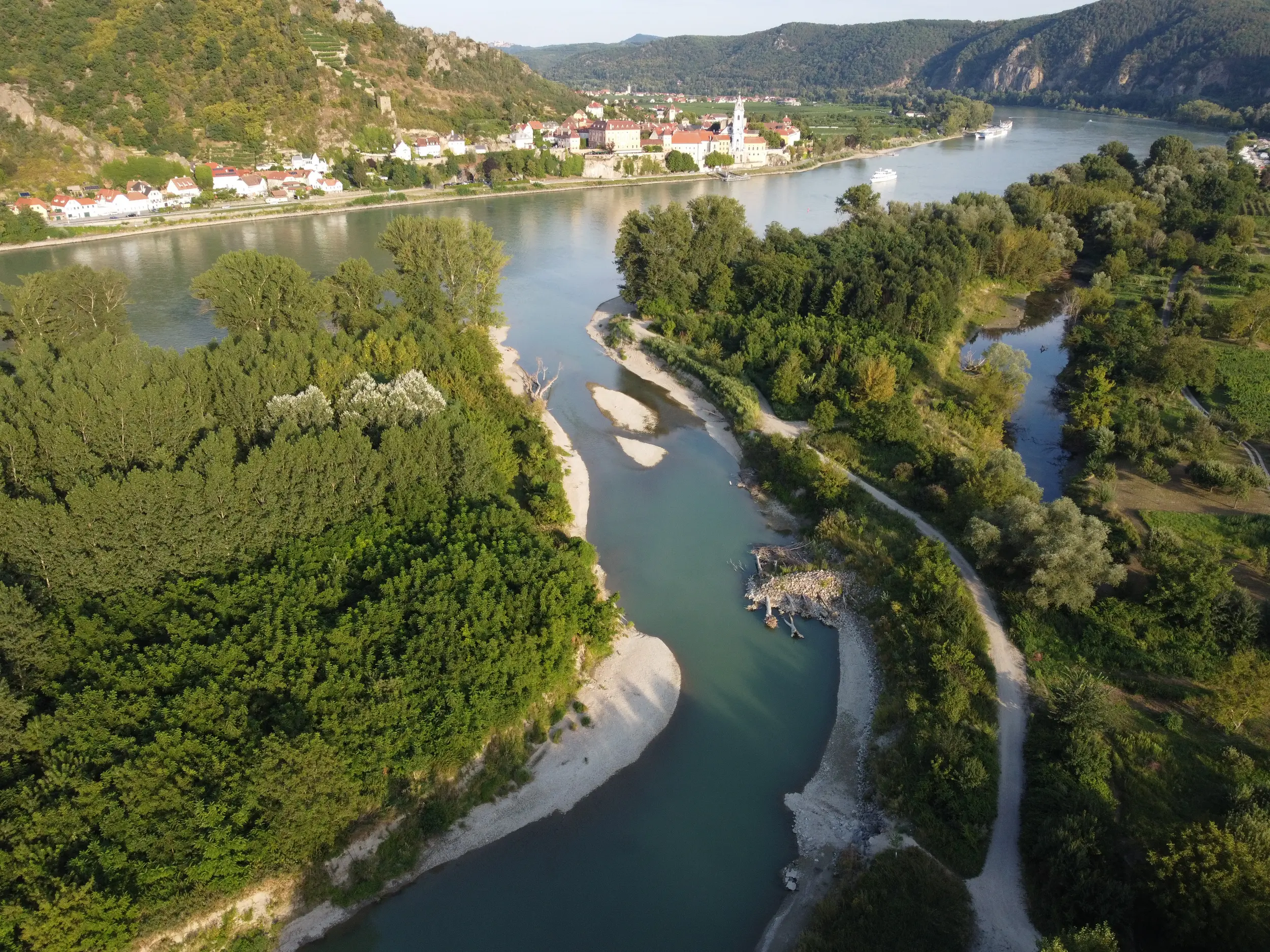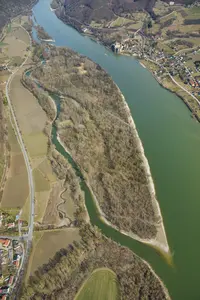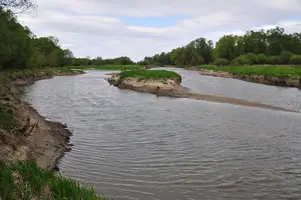viadonau is Europe's leading force in the field of near-natural river engineering and innovative water protection for waterways.
The implementation of countless projects has led to the expansion of our expertise in environmental water conservancy and we therefore possess the necessary experience to improve ecological conditions.
FGP
For the Danube east of Vienna, an integrative Catalogue of Measures was developed within the framework of the "Integrated River Engineering Project on the Danube East of Vienna (FGP)".
The river engineering measures contained therein are intended to sustainably counteract riverbed deepening in the entire section of the Danube between the Freudenau hydropower plant and the Austrian-Slovakian border, implement extensive renaturation measures and ensure reliable fairway conditions for Danube navigation.
The integrative planning process of the project places great emphasis on interdisciplinarity. Hydraulic engineering, navigation and ecology have been working in partnership for several years to find optimal solutions for the Danube east of Vienna - e.g. in the form of stakeholder participation. The FGP Catalogue of Measures is scientifically accompanied for the ongoing evaluation of the project effects achieved and for the optimisation of the measures.
Currently, the bedload management to stabilise the water level, the reconnection of the Spittelau branch and the tributary system Haslau-Regelsbrunn (Dynamic LIFE Lines Danube) as well as the revitalisation of the mouth of the River Fischa are to be highlighted.
More information on the Catalogue of Measures can be found at lebendige-wasserstrasse.at
LIFE NATUR Wachau
One of the key objectives of the LIFE Nature project is the structuring of the Danube’s main current. Using the “LIFE Wachau gravel concept” as a basis, gravel dredged by viadonau from the shipping fairway is used to create banks and islands near to the shore. Nearly 427,000 m³ of gravel has been used in this way to construct 24 different structures, thereby enabling gravel dredged from the Wachau section of the river to remain in the Wachau. The backwaters of Grimsing, Aggsbach Dorf and Rührsdorf-Rossatz were all reconnected to the Danube. The purpose of reconnecting these side arms to the Danube again was to ensure the long-term year-round flow of the Danube’s waters and this has now been successfully implemented.
LIFE + Projects
LIFE + Auenwildnis Wachau
The project "Auenwildnis Wachau" was implemented from 2015 to 2022. With the island of Schönbühel and the Pritzenau, new nature reserves of over 60 hectares have been created. The existing side arm system at Rührsdorf-Rossatz was expanded with the new Schopperstatt side arm and made dynamic with a third inflow opening and large bridges. Bank restoration, bank flattening and structural measures increase the habitat diversity for the reophilic fish species typical for the Danube. The "Schopperstattlacke" was retained for current-avoiding species.
In addition, extensive measures were taken to create alluvial forests, improve forest areas and target black poplar, amphibian and white-tailed eagle species.
Detailed information concerning this project can be found in our project database.
LIFE + Mostviertel Wachau
The LIFE + project Mostviertel - Wachau implemented measures to improve the river habitats at two Natura 2000 sites (Natura 2000 area "Wachau" and "Wachau - Jauerling" as well as the "the rivers in the alpine foothills of Lower Austria" and "Pielachtal").
Measures were put into effect to promote the wellbeing of all types of fish in the Danube, where a majority of the 57 native fish species are on the IUCN Red List of Threatened Species. The project consequently also contributes to biodiversity, conservation and an improvement to ecological integrity in accordance with the EU Water Framework Directive.
LIFE + Renaturierung Untere March-Auen
The March is the largest left bank feeder river in the upper reaches of the Danube and the only natural lowland river with Pannonian characteristics in Austria. Due to regulatory and intensification measures implemented in the last century, the river is no longer in an optimal condition. The EU-funded project "Restoration Lower March-Auen" began in 2011 and involves the implementation of numerous ambitious restoration measures and conservation projects. The aim of the project is the restoration of near-natural river dynamics in the Lower March wetlands and to ensure extensive cultivation as well as targeted measures for the protection of endangered species.
Detailed information concerning this project can be found in our project database.





